Peugeot 5008 (2010-2018) Review
Written by Andrew Brady
Quick overview
Pros
- Good space for seven with flexible seating
- Excellent boot space
- Comfortable to drive
Cons
- Not an exciting car to drive
- Poor cabin storage
- Breathless basic petrol engine
Overall verdict on the Peugeot 5008
"In this Peugeot 5008 review we are taking a look at a seven-seat MPV offering from the French manufacturer, before the SUV revolution came to dominate the market. It has a lot to offer in terms of practicality, making the most of its generous dimensions with a large boot and a flexible interior. The fact that it is a car rather than an SUV may make it more appealing for some buyers, and is worth taking a closer look at if you want something a bit more discreet."
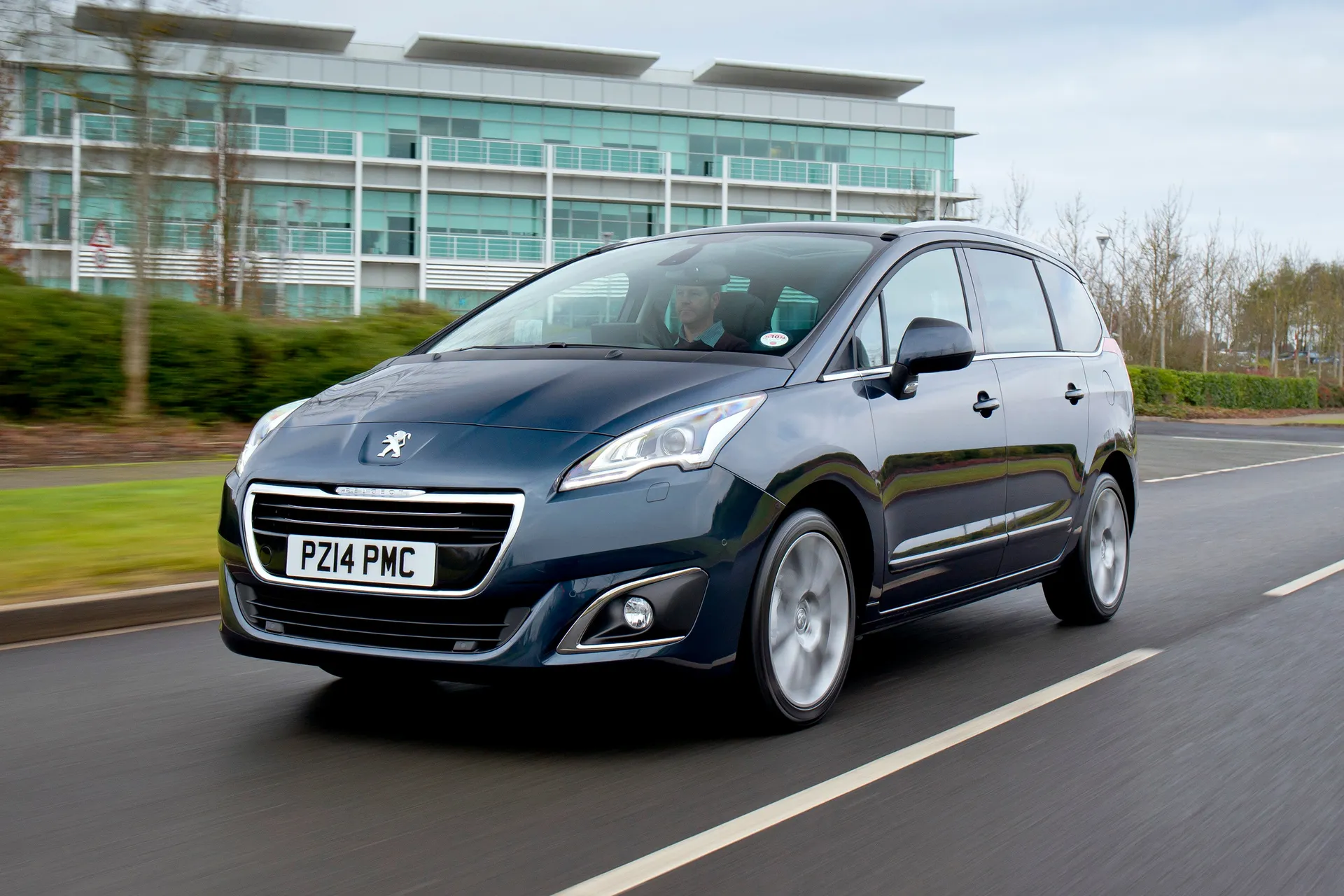
Every version of the 5008 came with seven seats, but it isn’t necessarily the car to go for if you want to carry seven full-sized adults all the time. The third row will take a pair of adults, thanks in part to those sliding middle seats, but it is still a bit of a squeeze.
There are clever touches throughout the cabin, too, such as the folding mechanism of the middle-row seats that makes getting into that third row easy. You also get three ISOFIX points so all the seats on the middle row can take baby seats.
For the majority of the 5008’s time on sale it came with three diesel and two petrol engines, with a third petrol added for the last two years of the car’s life.
Diesels consisted of a 120PS 1.6 and two 2.0-litre versions – with 150 or 163PS. The petrol range kicked off with the asthmatic 120hp 1.6 rising to a 156PS 2.0-litre model, with the high-tech 130PS 1.2-litre version joining the range in 2014. None of the 5008’s six engines will have huge running costs.
None of them will leave you grinning like a Cheshire Cat with their electric performance but then the 5008 isn’t exactly a car you’d want to drive enthusiastically. Instead, it manages to remain relatively composed on twisty country roads. Which, really, is all you’ll likely want from a sensible MPV.
There were three trims offered, Access, Active and Allure, while a 2014 brought a step up in quality and equipment to the 5008’s family car repertoire.
Access models only came with basic kit, such as a leather-trimmed steering wheel and air conditioning – which explains why they were laterly dropped from the range. Active cars added toys such as parking sensors all round, while Allure models got satellite navigation and a panoramic glass roof.
The 5008 isn’t the best seven-seater MPV available – the Ford S-Max is more fun to drive, while the Citroen C4 Grand Picasso is more comfortable. That said, the 5008 is easy to drive and practical – if you’re looking for a car that’ll slot seamlessly into your family’s life, you could do a lot worse.
If you're looking for the newer version, you need our Peugeot 5008 review.
Is the Peugeot 5008 right for you?
If you’re looking for a large and spacious family car that won’t cost the earth to run, you could do a lot worse than a 5008.
Sure, it’s never been a class-leader but, because it lacks this kudos, values are low – meaning you could have one of these practical machines for well south of £2,000. Generally speaking, you’ll get a younger 5008 with fewer miles for the same as one of its rivals in, shall we say, a less serviceable condition.
What’s the best Peugeot 5008 model/engine to choose?
Active trim is a minimum starting point in the Peugeot 5008 range thanks to its standard parking sensors that make this large car much easier to park.
In terms of engines, we’d avoid the breathless entry-level 1.6, but the rest are all up to hauling around the 5008 around. Buy a cheaper petrol if you only drive in town or a more frugal 2.0-litre diesel if you plan to rack up lots of miles on the motorway.
What other cars are similar to the Peugeot 5008?
The seven-searer 5008’s direct rivals include the Ford S-MAX and the Citroen C4 Grand Picasso. The latter of those shares many parts with the Peugeot including its sliding rear seats.
There are slightly bigger options, such as the SEAT Alhambra and Volkswagen Sharan, which are mechanically identical. Or you could go for a seven-seat SUV, like the Skoda Kodiaq.
Comfort and design: Peugeot 5008 interior
"The Peugeot 5008 driver’s seat sits high, giving you a great view all around. It feels particularly airy and bright on the top-level model, which comes with a panoramic glass roof."
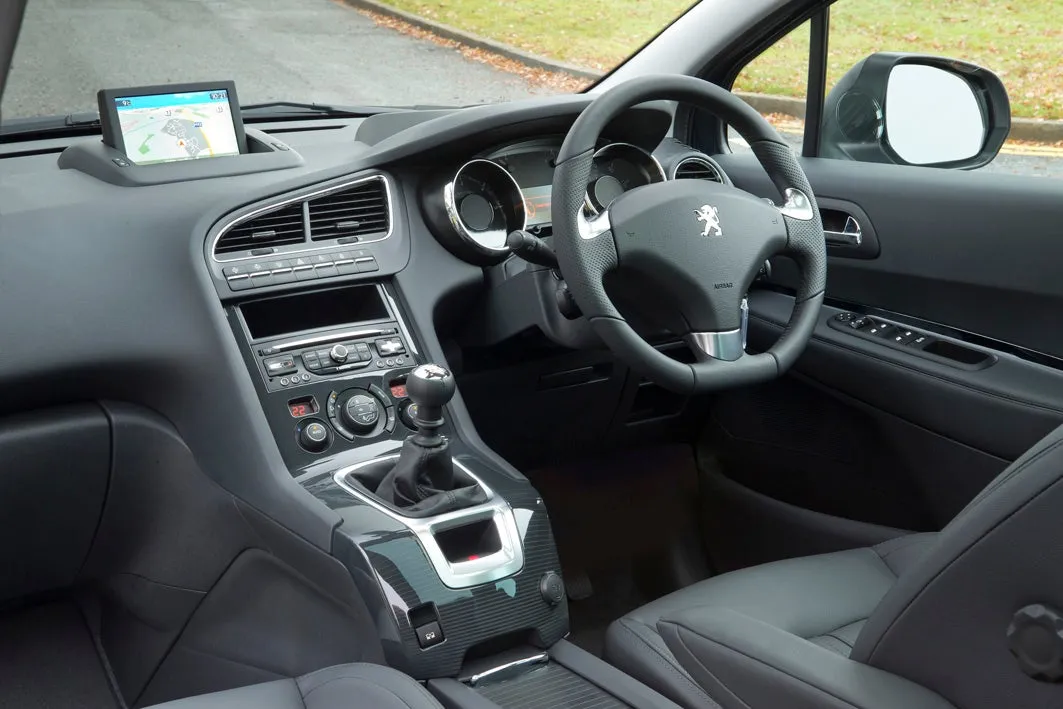
The gear lever is also raised, which helps with the driving position – it’s easily reached without having to twist into uncomfortable positions. The seats themselves have a decent amount of space in the front, although having a baby seat behind you will eat into your legroom.
The dashboard is relatively simply laid out, but the sea of buttons – some of them quite small – makes it a pain to operate. You can even hit the wrong ones at times. The dash’s sloping layout, meanwhile, means some of the controls are more of a stretch than others.
Jump to the middle row and you get seats that can be reclined as well as slid forwards and backwards, while standard rear blinds keep the sun out if you’re trying to grab a nap. The final row is a much more rudimentary affair with space for kids and no fancy features.
Quality and finish
The quality of the materials in the 5008 is generally good, and more so higher up on the various door and dashboard surfaces. Most of these areas are covered in soft-touch plastics that still have enough robustness to them that they feel like they will stand up to inquisitive fingers. Lower down, however, the plastics are harder and feel cheaper.
There have been reports of the dashboard rattling on cars, so look out for that when you road test the car.
Both Active and Allure trims come with cloth seats as standard, with leather optional on the top trim – annoyingly, you have to go for the leather to get heated front seats.
The top-level trim also gets tinted side and rear windows and a panoramic glass roof. The design of the various trims remains the same, though, with no extra stylistic flourishes on higher versions.
Infotainment: Touchscreen, USB, nav and stereo in the Peugeot 5008
The main navigation screen that sits on the top of the dashboard is a pop-up system that folds away flush with the dash. It is optional on the Active trim but standard on Allure models. It isn’t a touchscreen, though, everything is controlled by dials and buttons lower down.
It isn’t the most intuitive of systems, sadly, and it features several confusing menus with things tucked away in areas you might not expect.
Later models came with Bluetooth and USB connectivity, but it’s worth noting that this wasn’t the case on all versions – it was optional on early cars.
The head-up display is another feature that appears on the higher trim. Rather than projecting the information onto the windscreen as is the case in many such systems, the Peugeot has a small plastic screen that rises out of the dash just ahead of the steering wheel. It looks a little strange.
When it is up and operating, though, the basic information it shows is handy and it means you don’t have to glance down to see your speed.
Space and practicality: Peugeot 5008 boot space
Practicality is an area where the Peugeot 5008 excels. Boot space is decent with the rear seats folded at 512 litres but that’s with the middle row slid back. This can be boosted to 679 litres when the seats are slid forward and a huge 2506 litres when all the back seats are folded flat – not far shy of a small van, and better than even the larger Volkswagen Sharan.
With all seven seats up, though, the boot is tiny and there isn’t anywhere to neatly store the parcel shelf. The bootlid itself is also heavy, which can prove awkward in places such as car parks where there isn’t loads of space to open and close it.
The storage in the cabin could be better. The glovebox is small, for example, although there is a big box between the two front seats that makes up for this. There is some storage under the floor in the middle row, too, but some families might wish there were a few more cubbies.
Space for passengers is excellent, though. Legroom in the middle row is dictated by how much you slide the seats forward and backwards. Go all the way forward and it is a bit tight, especially if you are sat behind a tall driver, but there is loads of room if you send them as far back as they go.
Having three independently sliding seats is a bonus on several fronts. It allows you to accommodate a taller driver, and it means that you can allow more room for the rear passenger. All three seats come fitted with ISOFIX, too, which is a rarity and will be a real bonus for families with three smaller kids.
Headroom is good on all seats, even the rearmost ones. The panoramic roof does rob you of a couple of centimetres, but not enough to make a tangible difference.
Handling and ride quality: What is the Peugeot 5008 like to drive?
"The 5008 is a big MPV that’s relaxing to drive. The high-up driving position and large windows help, but the comfortable suspension is another big reason."
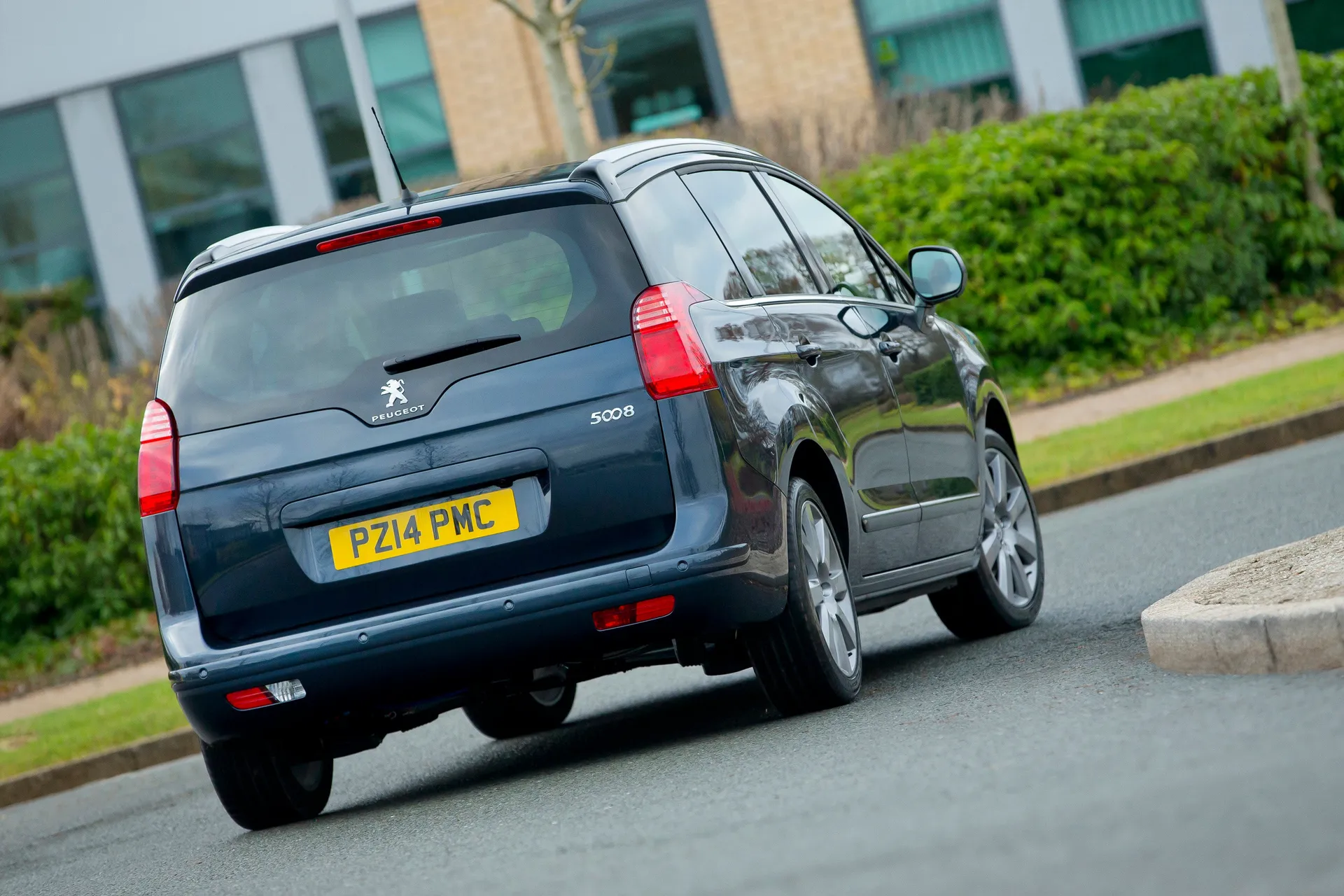
The suspension isn’t quite as soft as the Citroen C4 Grand Picasso’s, but this means the Peugeot doesn’t wallow so much.
It is soft enough that there is still a little body roll around corners but the suspension would have to be really quite firm to stop something as heavy and big as the 5008 from rolling at all. Thankfully Peugeot has prioritised ride comfort and this is particularly evident on the motorway, where the 5008 settles down to a relaxed cruise. The wheels are offered in two sizes – 17- and 18-inches – but the ride is just as good on the larger of the two.
Around town it is easy to park, thanks to the large mirrors and windows. It’s still worth going for a model that has parking sensors for extra reassurance. The steering is nicely accurate, too, and it is consistent in its responses so it is reassuring around corners fast and slow. If you want a car that is more engaging to drive then the Ford S-MAX will offer that – the steering is that bit more responsive.
What engines and gearboxes are available in the Peugeot 5008?
The 5008 was offered with three diesel engines throughout its life, with a 110PS 1.6-litre and a 2.0-litre with either 150PS or 163PS. The petrol range started out with two models – a 120PS and a 156PS 1.6-litre – but this was consolidated to just the one 120PS 1.2-litre three-cylinder model at the end of the car’s production run.
The only engine that is worth steering clear of if possible is the lower powered 1.6-litre petrol. This struggles to do the 5008’s size justice and you will find yourself wanting a little more power going up hills and overtaking, especially if you have a fully-laden car.
The petrol is a better bet if you are going to be doing lower mileage trips, while all three of the diesels are good performers on the motorway.
You get a choice between a six-speed manual gearbox and a six-speed automated manual that works in much the same way as an automatic. The former is the better of the two, as the automated manual is slightly jerky and hesitant.
The more conventional automatic gearboxes in rivals such as the Volkswagen Sharan are much better to drive. The manual boxes aren’t perfect – they are not the slickest setups out there – but they are easier to live with. One issue is the stiffly sprung clutch, which makes smooth starts tricky, but it gets easier as you get used to it.
Refinement and noise levels
The 5008’s cabin stays quiet and smooth and is particularly impressive on the motorway. There is very little wind or road noise, while all of the engines settle down at speeds. The standard six-speed gearbox means that you can sit at relatively low revs, too.
The lower-powered petrol engine will kick up more noise when you rev it hard, but otherwise the engines are also unobtrusive at lower speeds. It manages to keep vibration to a minimum, too.
Safety equipment: How safe is the Peugeot 5008?
The Peugeot 5008 was tested by Euro NCAP when it was first launched back in 2009 and it scored the maximum five stars at that point. The level of safety kit was one of the reasons for the top score, although it doesn’t have the sort of equipment that is required to record five stars under the more stringent tests that have been brought in since.
The kit includes six airbags, ESP and cruise control with a speed limiter. You can get Peugeot’s emergency call system, which alerts the emergency services in the case of a crash, but it was only offered as an option.
Front and rear parking sensors were available from Active trim and upwards, while the top-level trim came with a reversing camera. All versions came with a puncture repair kit rather than a spare wheel.
MPG and fuel costs: What does a Peugeot 5008 cost to run?
"The 120PS version of the 1.6-litre diesel is the most economical, with an official rating of 65.7mpg for both the manual and automatic model."
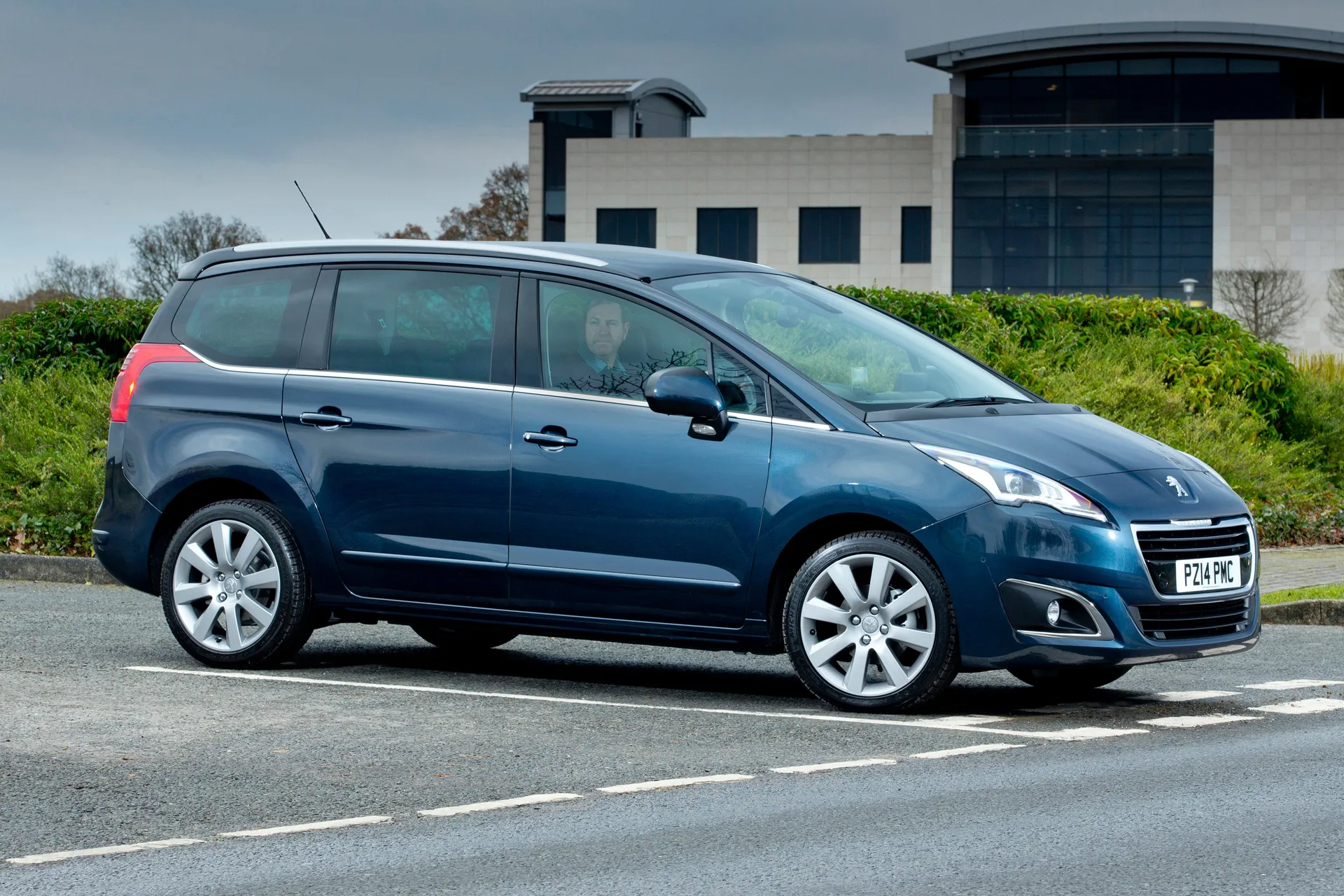
There are a couple of things to note on this – firstly this is for the smaller of the two wheel sizes, with the 18-inch wheels affecting economy to the tune of around 1.5mpg. Secondly, this is calculated on the old NEDC testing regime. Expect an economy in the mid 40s as a more realistic figure, especially if you load the car up with family and luggage.
How reliable is the Peugeot 5008?
The Peugeot 5008 scored a respectable 9.14 out of 10 for reliability in the HonestJohn.co.uk Satisfaction Survey, making it one of the better-performing Peugeots.
As a brand Peugeot performed less well, being placed 24th out of 30 manufacturers overall. As always, go for a car with a full main dealer service history for peace of mind.
Insurance groups and costs
The smaller petrol engines are the best bet for keeping insurance costs down – the 1.2-litre petrol sits in group 18. The rest of the range hover around the 18-19 mark, but the outliers to this are the higher-powered diesels – the 2.0-litre 150PS model is several groups higher and is in group 23.
VED car tax: What is the annual road tax on a Peugeot 5008?
The 5008 spans a couple of tax systems, with the later models fitting into the standard flat-fee VED system. None of the versions cost more than £40,000 when brand new so all will be eligible for the lower fee.
The earlier models fit into the CO2-based system. The diesel models are generally in lower bands, with emissions as low as 109g/km and several around the 112-115g/km mark that puts them in band C and eligible for rates as low as £30. The petrols are a different story, with some in bands H and I, which could see you paying a fair amount each year for tax.
How much should you be paying for a used Peugeot 5008?
"Big Peugeots have not traditionally held onto their value that well – the 5008 a perfect example of this."
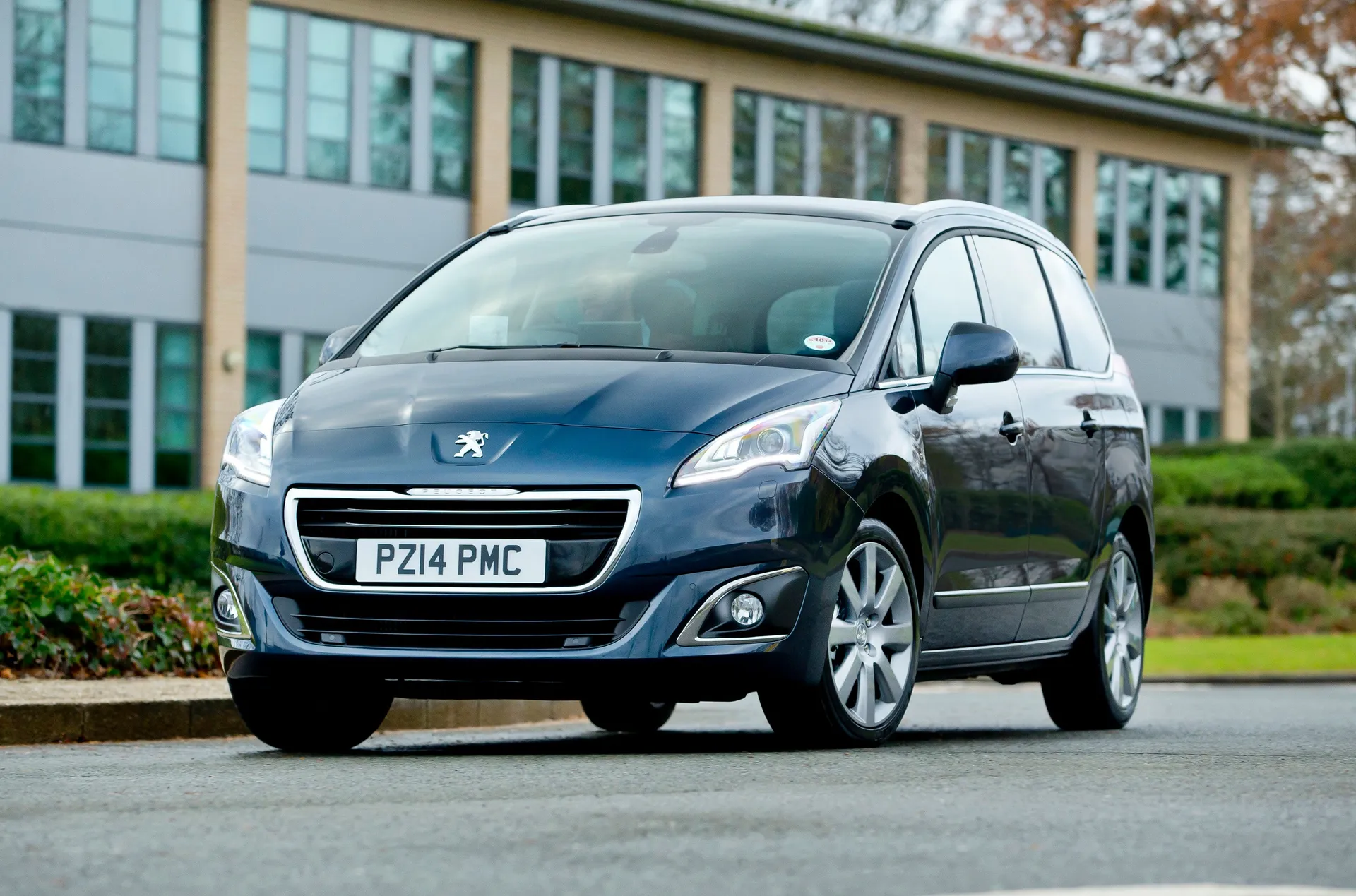
On the upside, this means you can generally pick up a great deal on a used model. A five-year old 120PS diesel can be had for around £11,000 to £12,000 – a handy saving given those cars started at around £23,000 brand new.
A six-year-old model tends to be around the £6000 to £7000 bracket while 10-year-old cars are around £3000 to £4000, although mileage has a bigger impact at this age.
Trim levels and standard equipment
The pick of the engines is the 120PS diesel, but so long as you avoid the basic petrol then you should be happy with any of the powertrains.
The basic trim is worth avoiding too, if you can, with Peugeot 5008 Active the sweet spot. You get front and rear parking sensors, electric windows all round and a greater degree of adjustment for the driver’s seat.
Peugeot 5008 Allure models added around £2,000 to the cost of a new 5008, which was quite the step up, but this will have narrowed on the used market so this model will be within reach for many too. The panoramic glass roof, head-up display and reversing camera are worth the extra, but the satellite navigation less so.
Ask the heycar experts: common questions
What problems does a Peugeot 5008 have?
Does the Peugeot 5008 have seven seats?
What is the road tax on a Peugeot 5008?
Get our latest advice, news and offers
Keep me updated by email with the latest advice, news and offers from heycar.
By submitting you agree to our privacy policy



